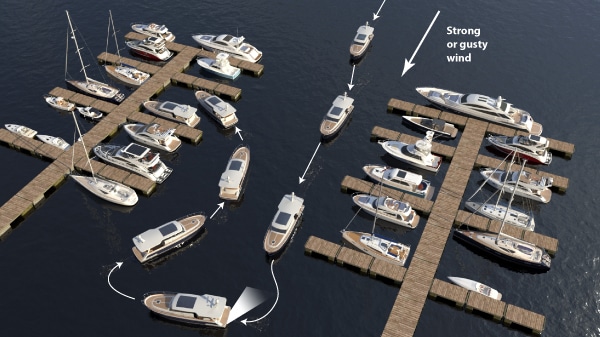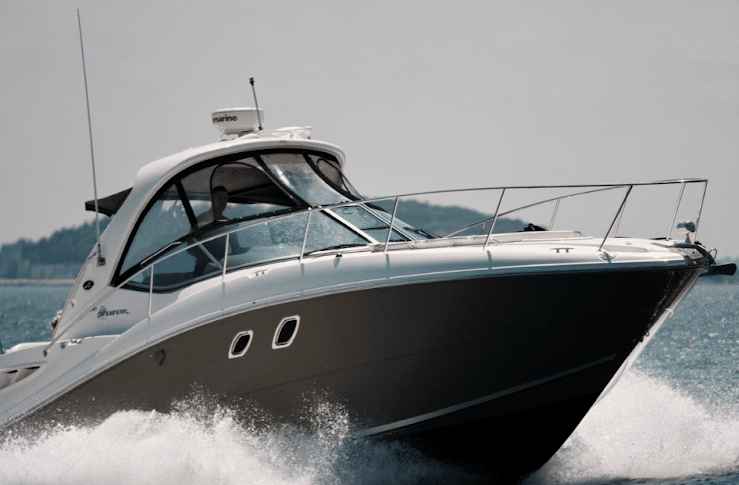Get started with powerboating with NauticEd’s FREE online Navigation Rules for Powerboats, or become a competent powerboater with the Skipper Large Powerboat Course – a comprehensive online powerboating course for beginner to intermediate powerboaters wanting to learn how to operate larger powerboats greater than 26ft. Or upgrade to the Bareboat Charter Master for Powerboats Bundle of online courses to also master multiday and near-coastal powerboating as well as charter powerboats on vacations.
Is Driving a Yacht Hard?
When it comes to defining a “yacht,” there’s no strict number. Even some of the largest yacht manufacturers will tell you the difference between a superyacht and a megayacht is “whatever the owner decides it is.”
But for the sake of this discussion, we’ll define a “yacht” as anything 35 feet and larger.
First, it’s important to understand that every additional foot in length adds more than just a little extra space—it increases the boat’s handling complexity exponentially. For example, the difference between a 35-ft and a 40-ft boat is significant in both room and maneuverability.
My advice: don’t go too big. Get a yacht that fits your lifestyle and goals. If your plan is weekend trips with the family, a 30–35 ft yacht might be perfect. Bigger isn’t always better—especially if the size makes you hesitant to use it. Fear of docking or maneuvering can lead to you simply not going out.
Now, let’s talk about what makes yachts challenging to drive. Without question, the hardest part is docking. Maneuvering in tight marinas and spaces – especially with excessive wind or current – is where things get tricky. Bigger boats weigh more, have more momentum, and present a larger surface area to the wind (the “freeboard”, the height of the hull above the water), meaning natural elements affect them more. So while navigation and safety matter, maneuverability is the biggest difference you’ll feel when stepping up in size.
If you already have experience with smaller boats and want to move up, I recommend going through NauticEd’s Skipper Large Keelboat courses—especially the modules on docking and spring lines. Mastering those skills will go a long way in building your confidence.
And if you’re starting from scratch? It’s absolutely doable—you just need a plan.
At NauticEd, we define competence with three things:
- Theory Knowledge – Learn how boats work. It starts in the classroom (or online).
- Practical Skills – Train with an instructor who can show you hands-on techniques.
- Experience – Get out on the water and build reps. That’s where real confidence comes from.
With the right foundation, driving a yacht becomes not just manageable—but enjoyable.
So, is driving a yacht hard? It can be—but only if you go in unprepared. Like anything worth doing, it takes some learning, some hands-on time, and a bit of patience. But with proper training, the right mindset, and experience behind the wheel, it becomes second nature. The key is to respect the learning process, invest in your boat-handling skills, and choose a boat that fits your lifestyle – not your ego. Confidence on the water doesn’t come from the size of your yacht, it comes from knowing you can handle it in a wide range of conditions and situations.

Get started with powerboating with NauticEd’s FREE online Navigation Rules for Powerboats, or become a competent powerboater with the Skipper Large Powerboat Course – a comprehensive online powerboating course for beginner to intermediate powerboaters wanting to learn how to operate larger powerboats greater than 26ft. Or upgrade to the Bareboat Charter Master for Powerboats Bundle of online courses to also master multiday and near-coastal powerboating as well as charter powerboats on vacations.





